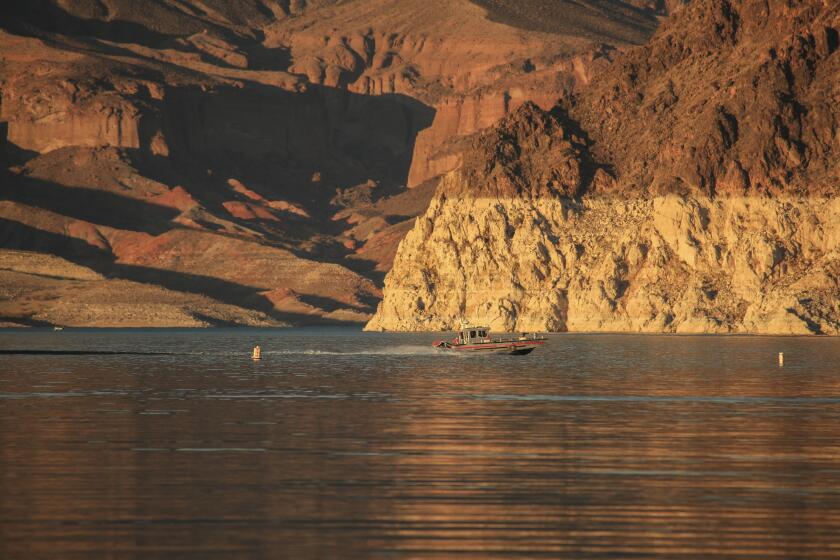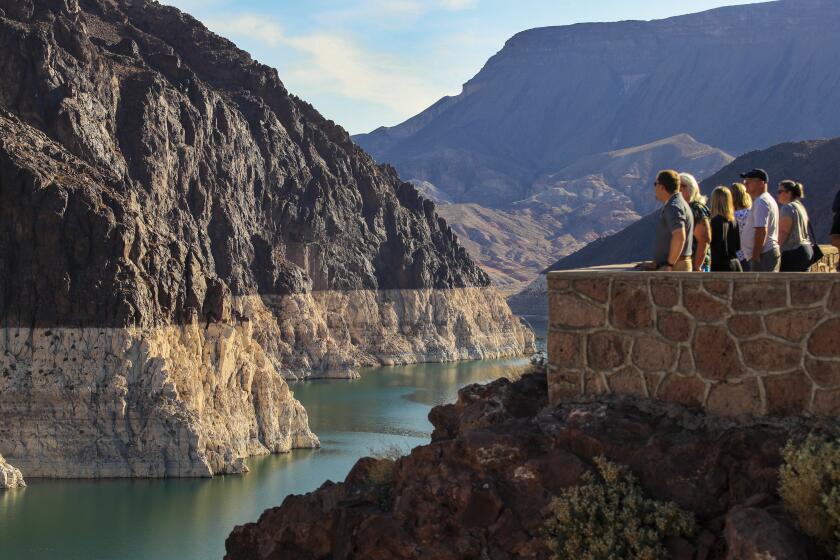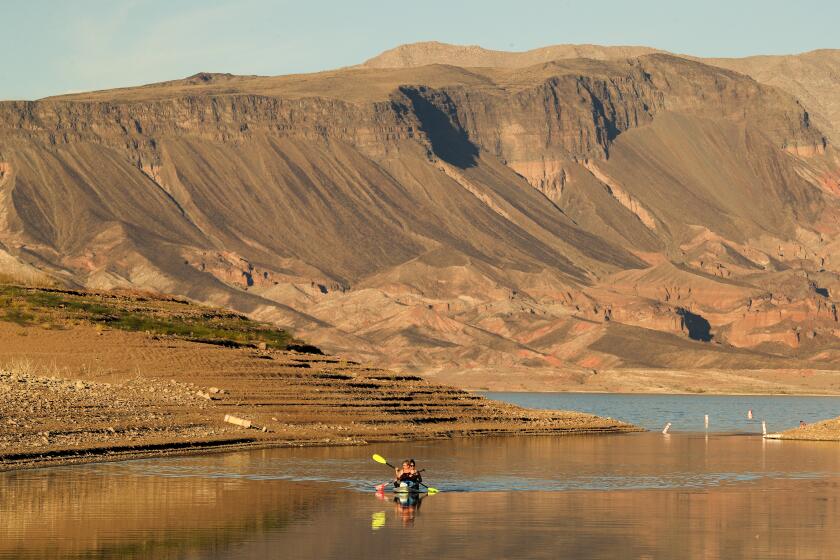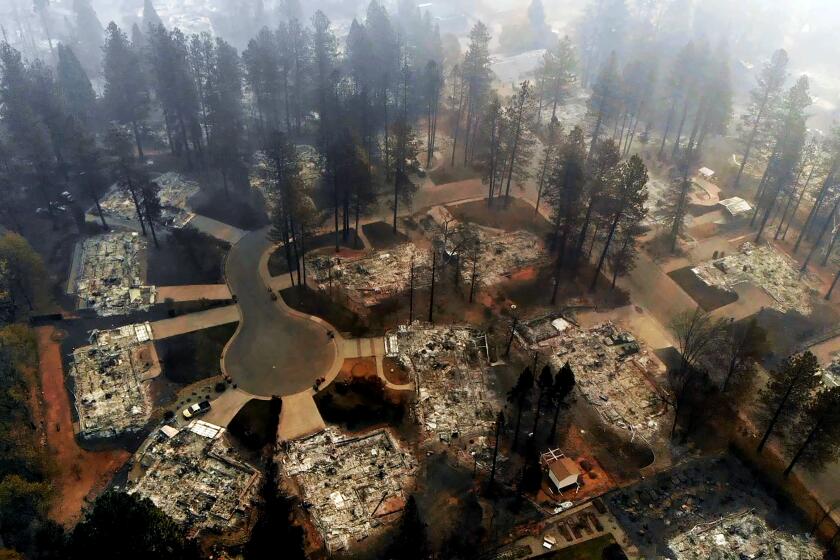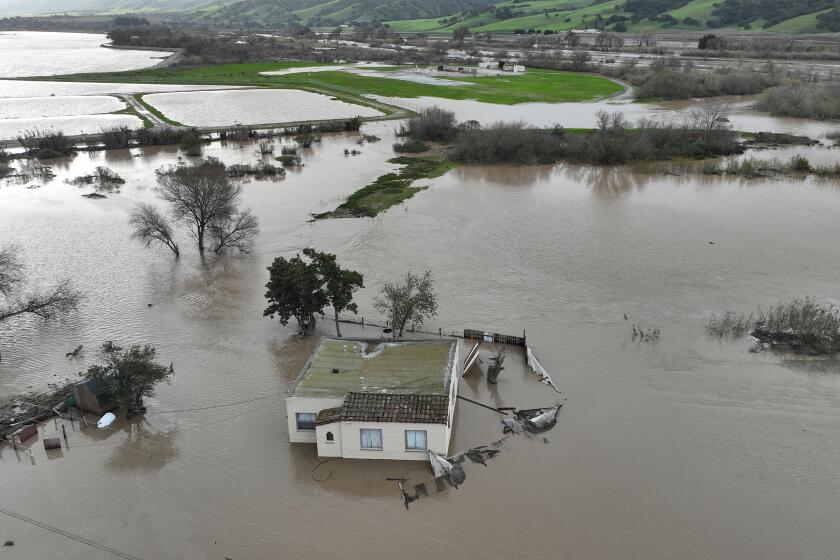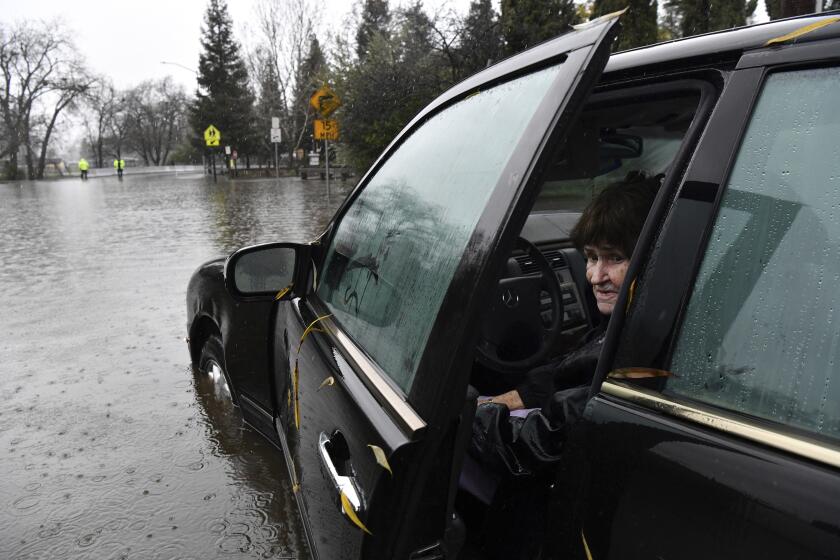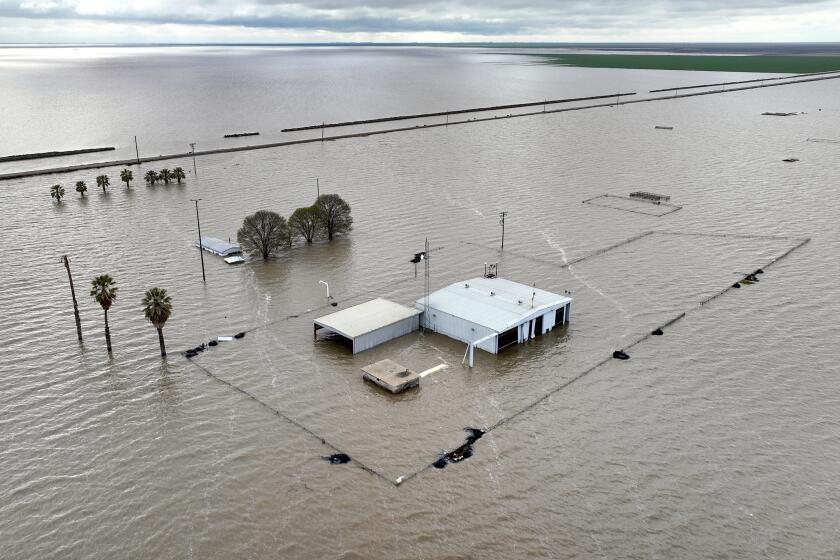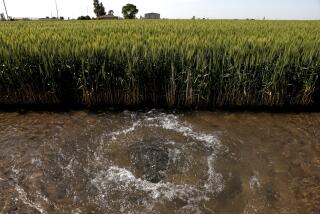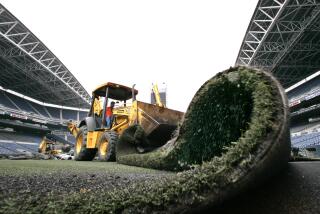Say goodbye to grass that’s only there for looks. California can’t afford to waste water

- Share via
California was so dry and its water supply so precarious by May 2022 that the State Water Resources Control Board issued an emergency order: No drinkable water could be used to irrigate grass that had no function other than to look nice.
The regulation does not apply to residential lawns, although they were already turning brown due to local restrictions on sprinkler use.
An unusually wet winter and federal largesse helped create a short-term Colorado River accord and gave California time to prepare for the hammer drop in 2026.
It does apply to all purely ornamental lawns — “nonfunctional turf,” in regulatory parlance — at commercial, industrial and institutional sites, such as shopping centers and corporate headquarters.
That order was recently extended for another year.
California’s six partners in Colorado River water distribution have come up with a disingenuous proposal to use evaporation for short-term cuts.
Las Vegas, which is much drier than Los Angeles, went a step further in 2021. Or rather, the state of Nevada did on the city’s behalf — by ordering the removal of nonfunctional turf. It’s the only region in the nation with that kind of permanent ban.
It’s time for California to follow Nevada’s lead and permanently remove decorative turf.
To be clear, we’re talking only about nonfunctional turf. That means grass that no one walks on, except to mow it. It doesn’t apply to playing fields, picnic grounds, parks, meeting areas, schools, cemeteries or any place where people gather, play, loll, visit or frolic. It won’t keep anyone from feeling wet grass under their bare toes. Instead, think fenced areas with “keep off the grass” signs, plus street medians, mall landscaping and the like.
After two years of deprivation, Southern Californians are being asked to do without something else: outdoor water. Considering the dire condition of our supplies, the restrictions are quite reasonable.
And again, it wouldn’t require homeowners to remove their lawns, although they really ought to. It wouldn’t apply to residences — although local municipal and water agency limits on sprinklers do.
And it would apply only to use of potable (drinkable) water.
With all those exceptions, what’s left? The restriction couldn’t actually save all that much water, could it?
If ‘drought’ means a period of dry years followed by a return to the norm, California is not in drought. The current climate is the norm.
You’d be surprised. The Metropolitan Water District of Southern California estimates that there are 218,000 acres of turf in its service area and that 23% of it is nonfunctional — and just for looks. Figure 1.9 million gallons of water per acre per year, do the math, and it comes out to nearly 98 billion gallons. That’s enough water to serve about 900,000 households a year.
The MWD board recommended imposing a permanent nonfunctional turf ban last October. It’s co-sponsoring Assembly Bill 1572 by Assemblymember Laura Friedman (D-Burbank), along with the Natural Resources Defense Council and Heal the Bay, which would do just that. The giant water wholesaler and those environmental groups are rarely on the same page on legislation.
Letting excess stormwater inundate carefully managed low-lying areas would be good for California’s natural ecosystems and a large, thirsty population at risk from water shortages and flooding.
A companion bill, AB 1573, would require much of the area now covered by nonfunctional turf to eventually be replaced with native California plants to restore sustainable biodiversity and support wildlife that is under increasing stress as the state becomes hotter and more arid. California has one of the nation’s highest rates of species at risk of extinction, and restoring a bit of the native ecosystem could improve their chances.
Limiting thirsty, nonusable landscaping is doubly important right now because California, Nevada and Arizona are negotiating for shares of the shrinking Colorado River and are trying to make their case to the referee, the U.S. Bureau of Reclamation, that they are doing all they can to make each gallon count ahead of the final 2026 decision.
Reducing water use on nonfunctional turf is something all three states in the river’s lower basin (and to some extent the upper basin states as well — Wyoming, Utah, Colorado, New Mexico) will soon have to do if they are to survive.
Even as California gets yet another atmospheric river blast and snowpack nears twice the average for this date, we’re still in grave danger of running out of water.
The requirement under AB 1572 would kick in in stages, beginning in 2026, giving property owners and landscapers plenty of time to adjust.
Some critics correctly note that limiting urban consumption won’t be enough to solve our supply problem and that greater savings are to be found in wasteful agricultural practices like growing alfalfa in the desert for export. That’s true, but it’s not an either/or proposition. Urban areas will be better positioned to put pressure on ag use when their own water use is tightened. No crop is more wasteful or more useless than turf that’s never harvested and never feeds, clothes or fuels anyone or anything, while producing no revenue.
Tulare Lake threatens to drown us while the Colorado River leaves us dry and thirsty. Welcome to the new California.
Most of the arguments against elimination of nonfunctional turf are specious. Yes, patches of watered but nonusable lawn help combat heat islands amid urban concrete, asphalt and steel, but so does less-thirsty vegetation that doesn’t have to be irrigated after its first year or maintained with fume-spewing power mowers. Yes, huge, empty lawns watered with sprinklers may make us feel like we’re on a damp English estate in a Jane Austen novel. But we’re not. We’re in 21st century California — increasingly arid but still paradise if we change our ways to be more in line with what nature offers.
More to Read
A cure for the common opinion
Get thought-provoking perspectives with our weekly newsletter.
You may occasionally receive promotional content from the Los Angeles Times.
